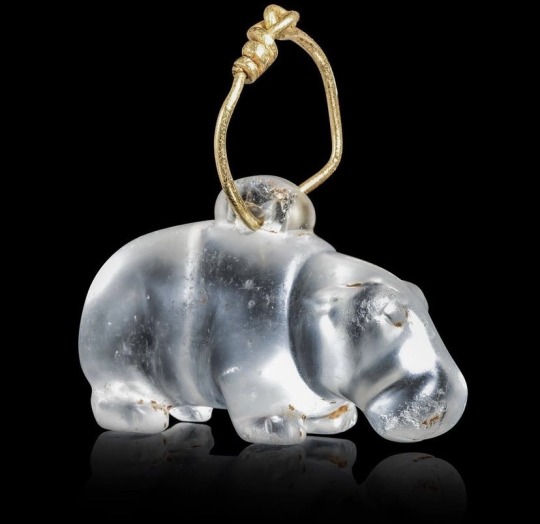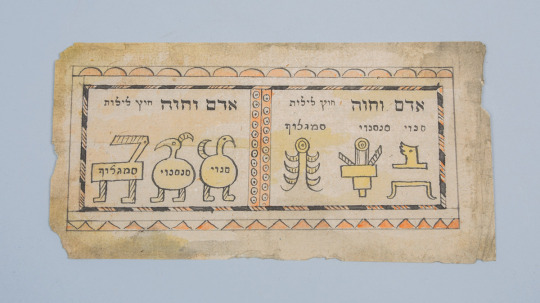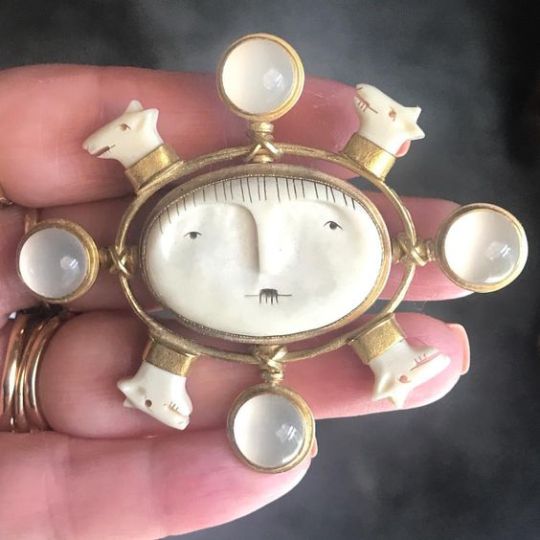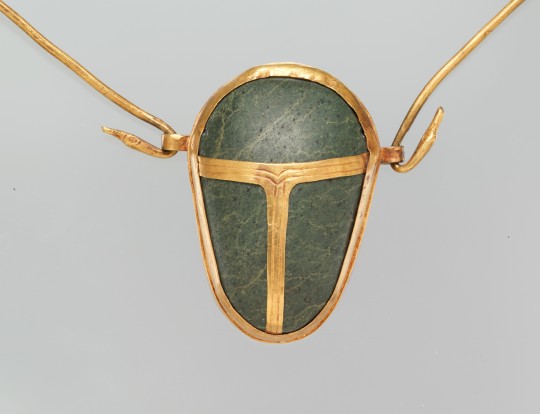#Amulet
Text

An Egyptian rock crystal of a chonky hinpopotamus amulet
(Middle Kingdom, ca. 2050-1650 BCE)
Amulets were worn by ancient Egyptians for their protective and regenative properties. Used in both in daily life and during funerary rites, amulets represented animals, deities, symbols or objects thought to possess the magical powers of warding off evil spirits.
As animals were popular representations, the hippopotamus was known for its apotropaic (e.g. ability to avert bad luck) qualities and was associated with rebirth.
#art#archaeology#sculpture#ancient#ancient art#ancient egypt#amulet#hippopotamus#apotropaic#egyptian art#egyptology#kemetic#ancient kemet#rock crystal#geology#ancient jewelry#jewelry
3K notes
·
View notes
Text

amulet
#art#artists on tumblr#artist#cartoon#digital art#cartoon art#cartoon style#amulet#fanart#procreate#digital sketch#sketch#sketching#messy sketching#emily hayes
755 notes
·
View notes
Text

412 notes
·
View notes
Text

569 notes
·
View notes
Text

AN EGYPTIAN AMETHYST CAT AMULET. LATE PERIOD TO PTOLEMAIC PERIOD. 664-30 B.C
5K notes
·
View notes
Text

Amulet (“kame’a”) against difficult childbirth. Beshenkovichi, Vitebsk Province, Belarus. Late 19th century.
The text is repeated twice, in the left and right part of the amulet: “Adam and Eve. To expel Lilith, Senoi, Sansenoi, Sammangelof.” The image and text are reproduced after “Raziel,” a mystic 11th century book that served as a kind of instruction for making amulets.
322 notes
·
View notes
Text

Amulet of the Goddess Sekhmet
Egyptian, Third Intermediate Period (about 1069–664 BCE)
With the head of a lion and the idealized figure of a woman, this amulet depicts a powerful ancient Egyptian goddess. Ancient Egyptians—both living and dead—wore amulets of gods and goddesses to bring protection and health. These included depictions of deities in their human, animal, or mixed forms.
This amulet represents one of several goddesses who appeared in a hybrid leonine-human form, likely Sekhmet, a goddess of pestilence and divine violence. In Egyptian mythology, Sekhmet acted as the Eye of Re, the daughter and protector of the sun god, Re. She had the ability to make enemies fall sick or heal those who were afflicted, so she would have provided the wearer of this amulet with protection from disease and other dangerous forces.
353 notes
·
View notes
Text
Metal detectorist in UK finds ancient Roman penis pendant

A metal detectorist recently discovered a silver, penis-shaped pendant in Kent, England that was likely worn around the neck to protect a person from misfortune around 1,800 years ago.
Ancient Roman writers such as Marcus Terentius Varro (lived 116 B.C. to 27 B.C.) and Pliny the Elder (A.D. 23 to 79) mention how the phallus and representations of it are thought to have had the power to protect a person from evil. Many depictions of the phallus have been found throughout the Roman Empire and scholars often believe that they were created to avoid bad luck.
The pendant (also called an amulet) is about 1.2 inches (3.1 centimeters) long, with a tiny ring at the top for a string (necklace) to go through. It dates back to a time when the Romans controlled England, between A.D. 42 and 410. Read more.
6K notes
·
View notes
Photo

Mastodon Ivory Amulet by Carolyn Morris Bach
774 notes
·
View notes
Text

"Kynareth Amulet"
Concept art for The Elder Scrolls V: Skyrim
Art by Ray Lederer
195 notes
·
View notes
Photo

Amulet
South America, Bolivia, La Paz, La Paz
1979
Metal (lead)
2K notes
·
View notes
Text

Ancient Egyptian heart amulet (gold and green schist) of one Manhata. Artist unknown; ca. 1479-1425 BCE (reign of Thutmose III, 18th Dynasty, New Kingdom). From the Tomb of the Three Foreign Wives of Thutmose III at Wadi Gabbanat el-Qurud, Thebes; now in the Metropolitan Museum of Art.
#art#art history#ancient art#Egypt#Ancient Egypt#Egyptian art#Ancient Egyptian art#Egyptian religion#Ancient Egyptian religion#kemetic#Thutmose III#18th Dynasty#New Kingdom#jewelry#jewellery#pendant#amulet#metalwork#gold#goldwork#schist#Egyptian Thebes#Metropolitan Museum of Art
684 notes
·
View notes
Text

Ancient Egyptian Frog Amulet, Lapis Lazuli, Date unknown.
341 notes
·
View notes
Text

Hedgehog Figurine
Blue-green faience hedgehog figurine with black spots on elliptical base, both left legs slightly advanced and modeled freely in the round. Back is scored in grid pattern and bumpy to simulate quills.
When food is scarce, hedgehogs retreat into underground dens for long periods, to re-emerge only in times of abundance. The Egyptians associated this behavior with rebirth and thus wore amulets in the form of hedgehogs or left figures such as this one in tombs.
Middle Kingdom. 12th to 13th Dynasty, ca. 1938-1700 BC. Now in the Brooklyn Museum. 65.2.1
Read more
210 notes
·
View notes
Text

~ Winged Scarab Amulet.
Date: 664 B.C.–332 B.C.
Medium: Faience
#ancient#ancient art#history#museum#archeology#ancient egypt#ancient sculpture#ancient history#archaeology#Egypt#Egyptian#egyptology#winged scarab amulet#scarab#amulet#faience#664 b.c.#332 b.c.
2K notes
·
View notes
Text

Heart scarab of Neferkhawet, 1504BC-1447BC, Egypt.
170 notes
·
View notes